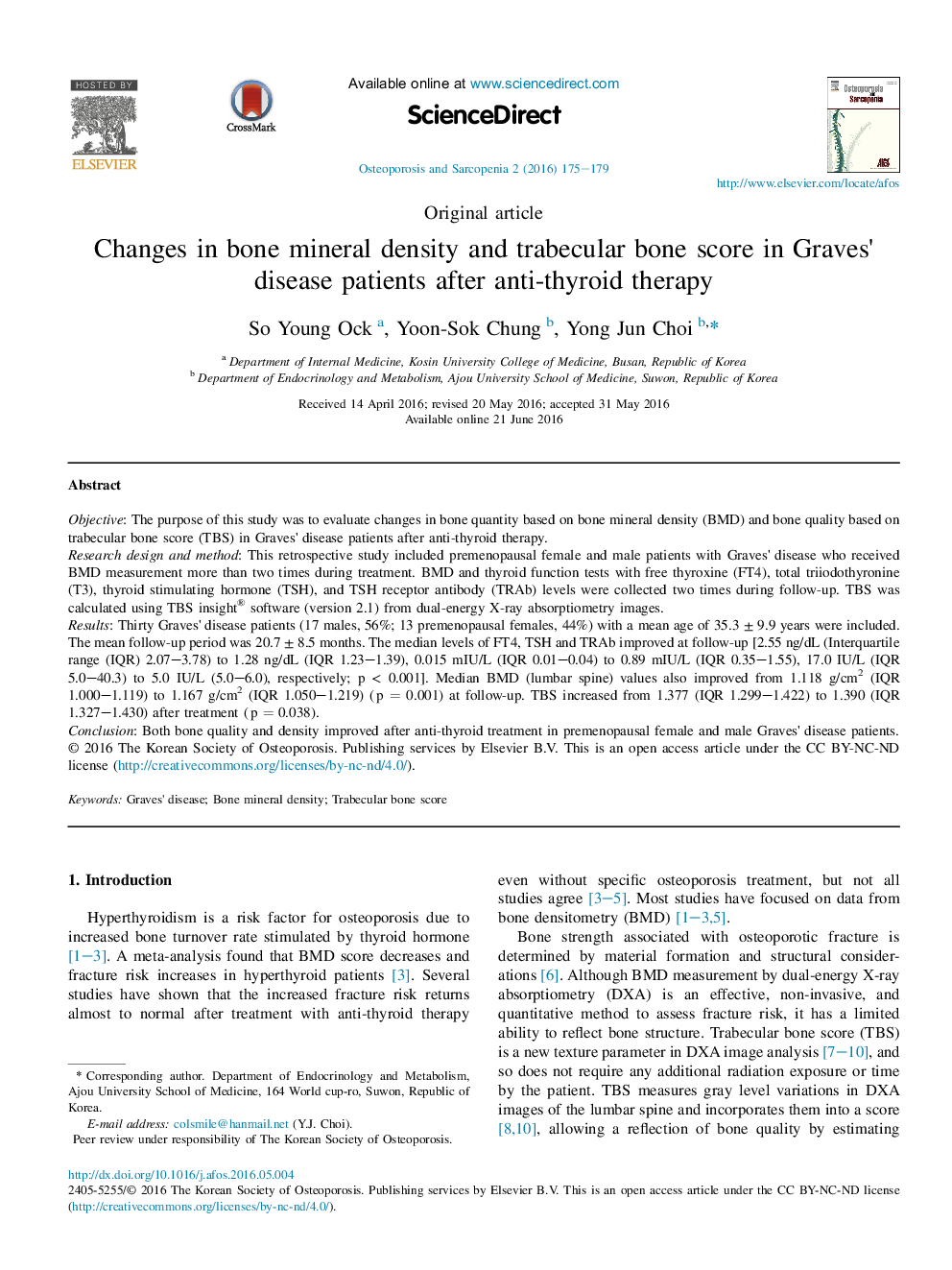| Article ID | Journal | Published Year | Pages | File Type |
|---|---|---|---|---|
| 3277888 | Osteoporosis and Sarcopenia | 2016 | 5 Pages |
ObjectiveThe purpose of this study was to evaluate changes in bone quantity based on bone mineral density (BMD) and bone quality based on trabecular bone score (TBS) in Graves' disease patients after anti-thyroid therapy.Research design and methodThis retrospective study included premenopausal female and male patients with Graves' disease who received BMD measurement more than two times during treatment. BMD and thyroid function tests with free thyroxine (FT4), total triiodothyronine (T3), thyroid stimulating hormone (TSH), and TSH receptor antibody (TRAb) levels were collected two times during follow-up. TBS was calculated using TBS insight® software (version 2.1) from dual-energy X-ray absorptiometry images.ResultsThirty Graves' disease patients (17 males, 56%; 13 premenopausal females, 44%) with a mean age of 35.3 ± 9.9 years were included. The mean follow-up period was 20.7 ± 8.5 months. The median levels of FT4, TSH and TRAb improved at follow-up [2.55 ng/dL (Interquartile range (IQR) 2.07–3.78) to 1.28 ng/dL (IQR 1.23–1.39), 0.015 mIU/L (IQR 0.01–0.04) to 0.89 mIU/L (IQR 0.35–1.55), 17.0 IU/L (IQR 5.0–40.3) to 5.0 IU/L (5.0–6.0), respectively; p < 0.001]. Median BMD (lumbar spine) values also improved from 1.118 g/cm2 (IQR 1.000–1.119) to 1.167 g/cm2 (IQR 1.050–1.219) (p = 0.001) at follow-up. TBS increased from 1.377 (IQR 1.299–1.422) to 1.390 (IQR 1.327–1.430) after treatment (p = 0.038).ConclusionBoth bone quality and density improved after anti-thyroid treatment in premenopausal female and male Graves' disease patients.
